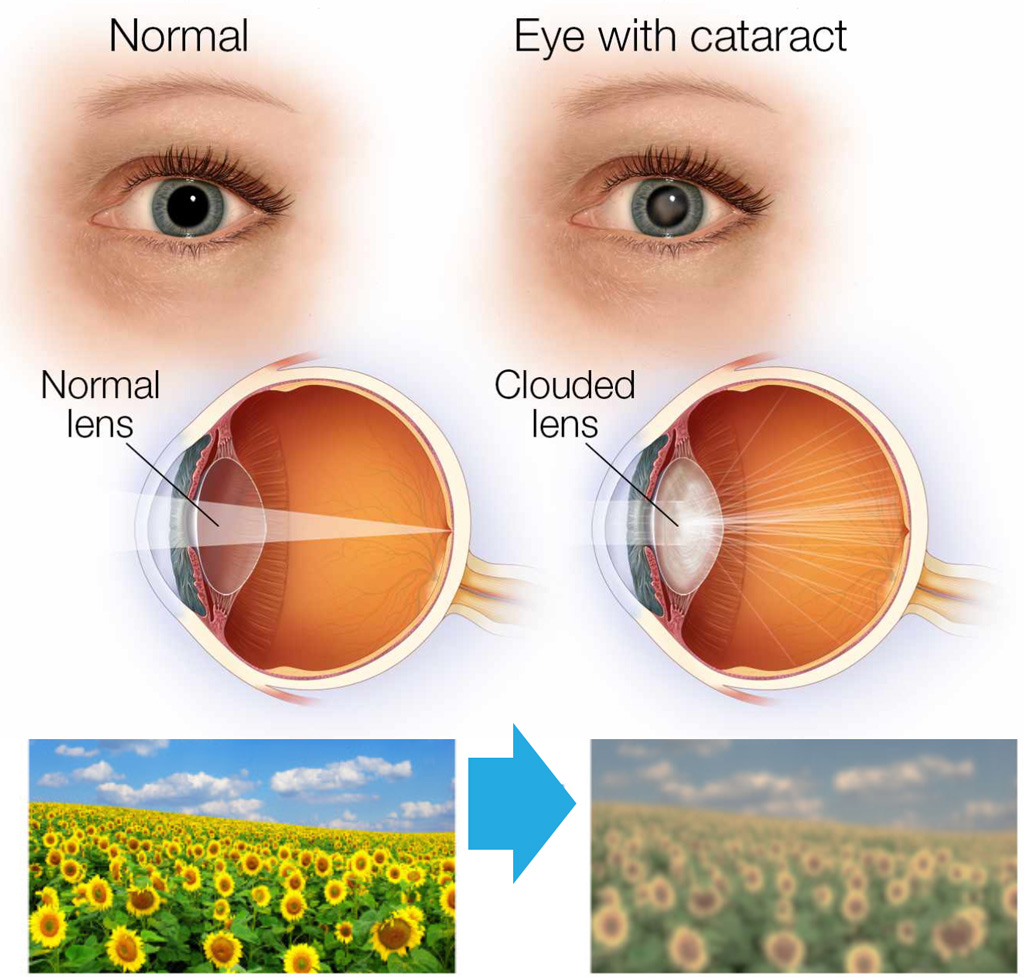Cataracts, those cloudy patches clouding your vision, are a common part of aging. But while their presence might seem daunting, understanding their causes, impact, and treatment options can empower you to navigate this visual change confidently. This guide delves into the world of cataracts, offering insights into their development, management strategies, and when seeking professional help becomes crucial.

Is it OK to live with cataracts?
In their early stages, cataracts might not significantly affect your vision. However, as they grow, they can cause:
- Blurred vision: Like looking through a foggy window, making daily activities challenging.
- Glare sensitivity: Increased sensitivity to light, especially headlights at night.
- Difficulty seeing colors: Colors appearing faded or dull.
- Nearsightedness: Cataracts can initially mimic nearsightedness, making reading difficult.
While living with mild cataracts is possible, their progression can significantly impact your quality of life and daily activities.
| Cataracts: Symptoms and Causes |
|---|
| Symptoms |
| Blurred or cloudy vision |
| Increased sensitivity to glare |
| Difficulty seeing at night |
| Double vision in one eye |
| Fading or yellowing of colors |
| Causes |
| Aging |
| Diabetes |
| Eye injury or trauma |
| Prolonged exposure to sunlight |
| Smoking |
Different Types of Cataracts
While we often think of cataracts as a single entity clouding our vision, they actually come in various types, each with its own characteristics and progression. Understanding these distinctions can be helpful when discussing this common eye condition with your doctor and making informed decisions about treatment.
The Key Cataract Classifications:
1. Age-related cataracts: This is the most common type, accounting for over 90% of cases. They develop gradually over time as the proteins in your lens naturally change and clump together, causing the cloudy appearance.
2. Congenital cataracts: These are present at birth or develop during infancy, often due to genetic factors, infections, or metabolic disorders.
3. Secondary cataracts: These form after another eye surgery, like cataract surgery itself, due to the growth of scar tissue behind the artificial lens implant.
4. Traumatic cataracts: These develop after an injury to the eye, which can damage the lens and trigger cataract formation.
5. Diabetic cataracts: People with diabetes are at an increased risk of developing cataracts due to changes in blood sugar levels affecting the lens.
Understanding the Differences:
Each type of cataract can progress at different rates and affect vision in various ways. Knowing the specific type you have can help your doctor:
- Predict the pace of progression: Some cataracts develop faster than others, influencing treatment decisions.
- Identify potential underlying causes: Congenital or traumatic cataracts might point to other health conditions requiring attention.
- Recommend the most suitable treatment: Different types of cataracts might require specific surgical techniques or approaches.
What to do if you have cataracts?
If you experience any vision changes suggesting cataracts, consult an eye doctor for a comprehensive evaluation. Early detection and monitoring are crucial. Depending on the severity, your doctor might recommend:
- Regular eye exams: Monitoring cataract progression and assessing vision changes.
- Glasses or contact lens adjustments: Sometimes, updated prescriptions can improve vision despite cataracts.
- Cataract surgery: This minimally invasive procedure removes the clouded lens and replaces it with an artificial one, restoring clear vision.
What happens if you don’t take care of cataracts?

Untreated cataracts continue to grow, leading to:
- Severe vision impairment: Making daily activities like driving or reading almost impossible.
- Increased risk of falls and injuries: Due to poor depth perception and blurry vision.
- Depression and social isolation: Difficulty participating in activities you enjoy can impact your mental well-being.
How long can you go with cataracts?
The timeframe varies depending on individual factors. While some can manage with early-stage cataracts for years, others experience rapid progression requiring earlier intervention. Consulting your eye doctor regularly is crucial for making informed decisions about your vision and the right time for cataract surgery.
Remember: Cataracts are a common age-related condition, but they don’t have to dictate your quality of life. With regular eye exams, early detection, and appropriate treatment options, you can maintain clear vision and enjoy life to the fullest. Don’t hesitate to prioritize your eye health and seek professional guidance for a brighter future.





